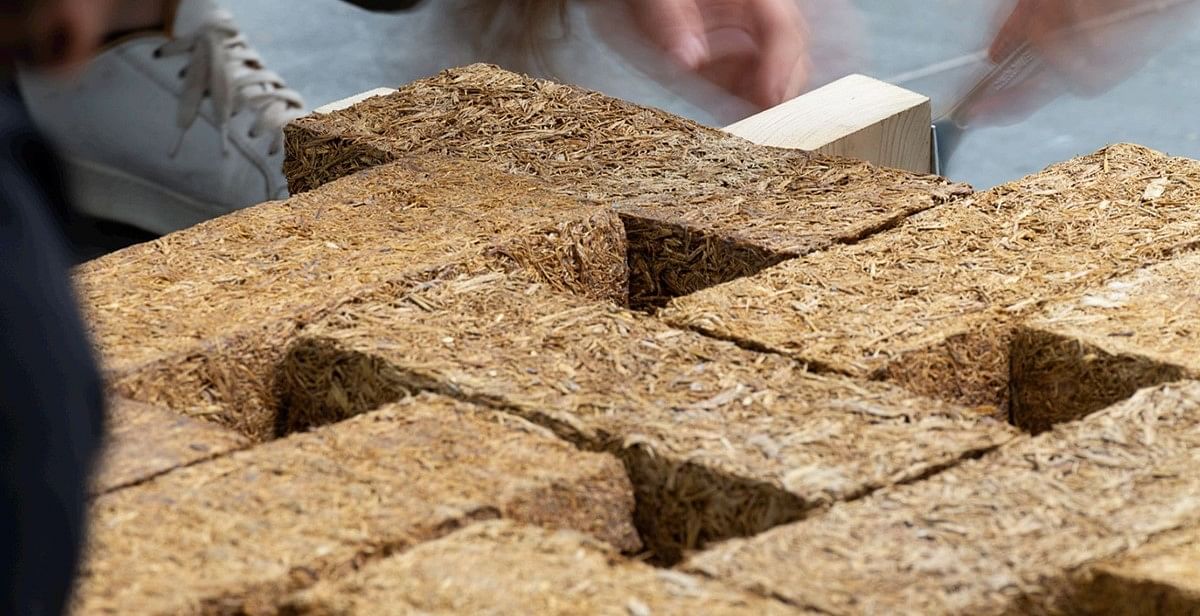
Scientists at the University of East London (UEL) have developed a unique construction material called Sugarcrete, which represents a significant achievement in sustainable construction. Developed in collaboration with Tate & Lyle Sugars and with creative partnership from Grimshaw, Sugarcrete offers a promising solution to address the carbon footprint associated with traditional construction materials like bricks and concrete.
Sugarcrete is derived from sugarcane fibers, specifically bagasse, which is the residue left over after sugar sap extraction. By mixing bagasse with bespoke sand-mineral binders, researchers have created a versatile material that can serve as both an insulating panel and a load-bearing element, presenting a sustainable alternative to conventional construction materials.
One of the key advantages of this material is its significantly reduced carbon footprint compared to traditional materials. Studies conducted by UEL's Sustainability Research Institute (SRI) have shown that Sugarcrete production results in a carbon footprint that is only 15-20% of that associated with concrete production. Additionally, the material offers faster curing times, requiring only one week compared to the 28 days typically needed for concrete, and is four to five times lighter than concrete blocks.
Senior Lecturer in Architecture at UEL, Armor Gutierrez Rivas, highlights the potential impact of Sugarcrete on global carbon emissions. With sugarcane being the world's largest crop by production volume, the utilization of bagasse-based products like “Sugarcrete” presents an opportunity to significantly reduce CO2 emissions in the construction sector, which accounts for 40% of annual global CO2 emissions.
The application of newly developed material extends beyond its environmental benefits. Through advanced digital modeling and robotic fabrication techniques, researchers have developed prototypes for Sugarcrete slabs, demonstrating its viability as a demountable, reusable, and fire-resistant composite material for flooring systems. This innovative approach to construction opens up possibilities for sustainable building practices that prioritize both environmental conservation and structural integrity.
The potential of Sugarcrete extends beyond the laboratory, with UEL exploring partnerships and opportunities for its implementation on a global scale. A recent visit by Senior Lecturer Armor Gutierrez Rivas to India showcased the material's potential to significantly reduce carbon emissions in the South Asian country's building sector.
During his visit, Gutierrez Rivas met with key stakeholders and partners involved in the production and utilization of Sugarcrete in India. Partnerships with organizations like Chemical System Technologies (CST) demonstrate the local applicability and scalability of Sugarcrete in addressing India's construction needs while minimizing environmental impact.
Moreover, the utilization of bagasse from sugarcane processing facilities like Daurala in Uttar Pradesh presents an opportunity to create a sustainable supply chain for Sugarcrete production, empowering local communities and reducing dependence on energy-intensive brick production methods.
Alan Chandler, Co-Director of UEL's SRI, emphasizes the broader socio-economic implications of Sugarcrete, particularly in empowering women and rural communities involved in sugarcane cultivation and brick production. By providing a decarbonized alternative and a healthier income stream, Sugarcrete has the potential to transform livelihoods and promote sustainable development.
With its innovative blend of sustainability, functionality and scalability, Sugarcrete stands to revolutionize the construction industry and pave the way for a greener, more resilient built environment.










